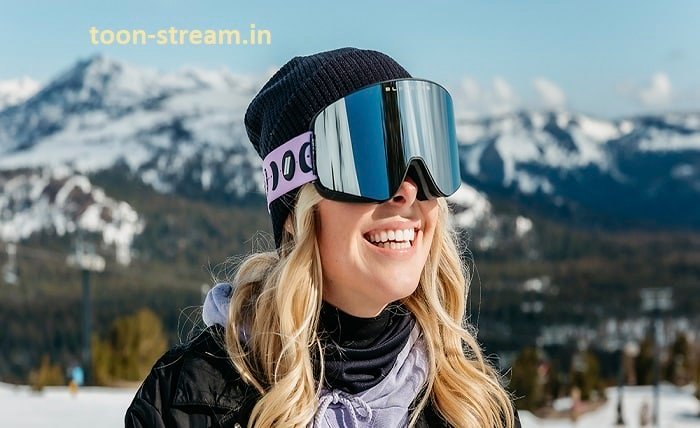Guide to Goggles: Types, Uses, and Benefits

Introduction
Goggles are an essential piece of equipment for various activities, offering protection and enhanced performance. Whether you are swimming, skiing, or working in a laboratory, the right pair of goggles can make a significant difference. This comprehensive guide will explore the different types of goggles, their uses, benefits, and tips for choosing the perfect pair to meet your needs.
Goggles
Goggles are protective eyewear designed to shield the eyes from hazards such as chemicals, dust, water, and UV rays. They are used in various settings, from sports to industrial environments. The primary function of goggles is to provide a barrier between the eyes and potential dangers.
Types of Goggles
Swimming Goggles
Swimming goggles are designed to protect the eyes from chlorine and other chemicals in the water. They provide clear vision underwater and prevent irritation.
Ski Goggles
Ski goggles are essential for winter sports enthusiasts. They protect the eyes from wind, snow, and harmful UV rays, ensuring clear vision on the slopes.
Safety Goggles
Safety goggles are used in industrial and laboratory settings to protect the eyes from chemical splashes, flying debris, and other hazards. They are made from durable materials and often feature anti-fog coatings.
Tactical Goggles
Tactical goggles are used by military and law enforcement personnel. They provide protection in combat situations, shielding the eyes from dust, debris, and bright flashes.
Motorcycle Goggles
Motorcycle goggles are designed to protect riders from wind, dust, and debris. They often feature shatterproof lenses and comfortable straps.
Benefits of Wearing Goggles
Eye Protection
The primary benefit of wearing goggles is protecting the eyes from harmful substances and environmental factors. They prevent injuries and long-term damage.
Enhanced Performance
In sports, goggles can enhance performance by providing clear vision and reducing glare. This is particularly important in swimming and skiing.
Comfort and Fit
Modern goggles are designed for comfort and a secure fit. They feature adjustable straps and soft padding to ensure they stay in place without causing discomfort.
Choosing the Right Goggles
Consider the Activity
The type of goggles you need depends on the activity. Swimming, skiing, and industrial work all require different features.
Lens Material
Look for lenses made from durable materials such as polycarbonate. This ensures they are shatterproof and provide adequate protection.
UV Protection
For outdoor activities, UV protection is crucial. Ensure your goggles have lenses that block harmful UV rays.
Anti-Fog Coating
An anti-fog coating is essential for maintaining clear vision in humid or variable temperature conditions.
Comfort and Fit
Choose goggles with adjustable straps and padding for a comfortable fit. They should stay in place without causing pressure points.
Maintaining Your Goggles
Proper maintenance of your goggles ensures their longevity and effectiveness.
Cleaning
Clean your goggles regularly with mild soap and water. Avoid harsh chemicals that can damage the lenses.
Storage
Store your goggles in a protective case when not in use. This prevents scratches and other damage.
Replacing Lenses
Over time, lenses can become scratched or damaged. Replace them as needed to maintain clear vision and protection.
Common Issues with Goggles
Fogging
Fogging is a common issue, especially in humid conditions. Anti-fog coatings and proper ventilation can help prevent this.
Leaks
Leaks can occur if the goggles do not fit properly. Ensure a secure fit by adjusting the straps and padding.
Scratches
Scratches can impair vision and reduce the effectiveness of the goggles. Handle them carefully and store them properly to avoid damage.
Innovative Features in Modern Goggles
Polarized Lenses
Polarized lenses reduce glare and improve visibility, making them ideal for outdoor sports and activities.
Prescription Lenses
For those who need vision correction, prescription lenses can be fitted into goggles, ensuring clear vision without the need for additional eyewear.
Interchangeable Lenses
Some goggles come with interchangeable lenses, allowing users to switch between different tints and coatings based on their needs.
Environmental Impact of Goggles
Sustainable Materials
Manufacturers are increasingly using sustainable materials to reduce the environmental impact of goggles. Look for brands that prioritize eco-friendly practices.
Recycling Programs
Some companies offer recycling programs for old goggles, ensuring they are disposed of responsibly.
Goggles for Kids
Importance of Protection
Children’s eyes are particularly vulnerable, making goggles essential for activities like swimming and skiing.
Fun Designs
Kids’ goggles often feature fun designs and bright colors to make wearing them enjoyable.
Proper Fit
Ensure kids’ goggles fit properly to provide adequate protection and comfort. Adjustable straps are particularly important.
Conclusion
Goggles are a versatile and essential piece of equipment for many activities, offering crucial protection and enhancing performance. By understanding the different types of goggles and their specific uses, you can choose the right pair to meet your needs. Whether for sports, industrial work, or everyday activities, the right goggles can make a significant difference in comfort, safety, and effectiveness. Remember to maintain your goggles properly to ensure they provide long-lasting protection and performance.
FAQs
FAQ 1: How do I prevent my goggles from fogging up?
To prevent fogging, choose goggles with an anti-fog coating and ensure proper ventilation. You can also use anti-fog sprays or wipes.
FAQ 2: Can I wear goggles over my glasses?
Yes, some goggles are designed to fit over prescription glasses. Alternatively, you can opt for prescription goggles.
FAQ 3: How often should I replace my goggles?
Replace your goggles when the lenses become scratched or damaged, or if they no longer fit properly. Regular maintenance can extend their lifespan.
FAQ 4: Are there goggles specifically for sensitive eyes?
Yes, some goggles are designed for sensitive eyes, with hypoallergenic materials and softer padding.
FAQ 5: What should I look for in kids’ goggles?
For kids’ goggles, prioritize a proper fit, comfortable padding, and adjustable straps. Fun designs can also make them more appealing to wear.





